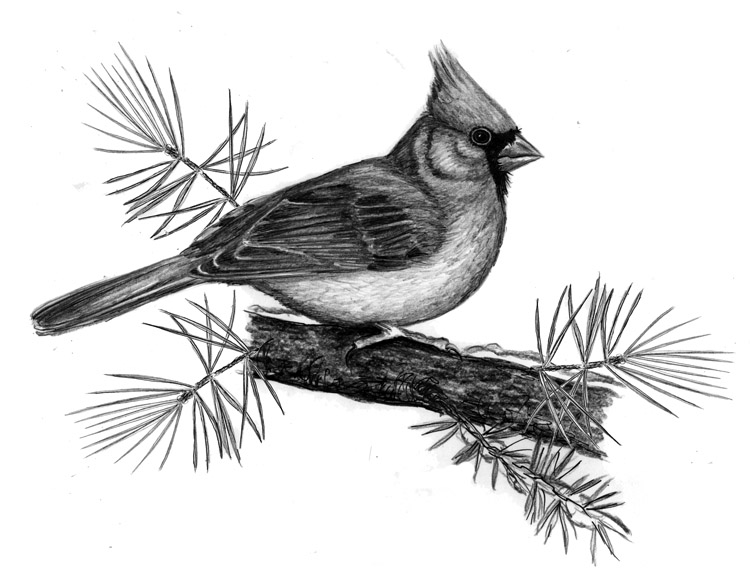
Dear Bird Folks,
My favorite birds are cardinals, but you are always making fun of them. Why don’t you like cardinals?
– Maureen, Mashpee, MA
That’s not true, Maureen,
Well, maybe part of what you said is true. I do make fun of cardinals, but it doesn’t mean I don’t like them. I like all birds, even birds the rest of society despises (pigeons, cormorants, etc.). After receiving your note, I started listing all the reasons why I like some birds more than cardinals; but then I changed my mind. There’s enough side-taking going on right now. We don’t need it in the bird world, too. So, instead, I’m going to write an entire column about cardinals without saying anything divisive, or at least I’m going to try. Here goes.
Because they are regularly chased away by birds such as grackles, cardinals have the reputation (mostly thanks to me) of being wimpy. However, this is not quite true. Cardinals are pretty darn tough. For example, they don’t migrate. They remain in New England all winter, while most of the grackles head south. Now who’s the wimp?
Nearly once a week a confused or lost bird will mistakenly fly into our shop. Sometimes the bird will fly out on its own, but other times it will need our help. In most cases, we just grab the tired bird with our bare hands and toss it outside. But when a cardinal flies inside, we put on gloves – thick gloves. That massive red beak isn’t just for show. It can easily open anything from a sunflower seed, to a safflower seed, to a can of tuna, or so it seems. Without wearing gloves for protection, a cardinal will draw blood from us faster than a phlebotomist. (Always use protection.)
Speaking of not being wimpy: Soon a few lucky folks will have birds purposely flying at their windows. Spring is when some aggressive birds attack their own reflections. Of course, the birds are simply trying to drive away the “intruders.” This strange behavior has been observed in lots of species, but cardinals (and robins) are the most notorious. Why? Once a cardinal couple chooses a territory, they will, in some cases, assail all other cardinals, even their own reflections. Some people will argue that any bird that is fooled by its own image is just plain stupid. This may be true, but I’m going to argue that the stupid bird is simply a dedicated parent…and being a parent will make anyone do stupid things.
One of my favorite birds is the Blue Jay. They are beautiful and fun to watch. But guess how many states have the Blue Jay as their state bird. The answer is zero. Not a single state honors one of my favorite birds. Yet, states are lining up to claim the cardinal. At last count, seven U.S. states have designated the Northern Cardinal as their state bird. The first state to do so was Kentucky. That happened in 1926, way back when Daniel Boone was probably still governor. The most recent state to jump on the cardinal bandwagon was Virginia in 1950. Cardinals are a perfect fit for Virginia. The brilliant red birds look even more handsome while sitting in a Virginian dogwood. However, Virginia loses points for lack of originality. Just a few months earlier, in 1949, West Virginia proclaimed the cardinal as its state bird, yet Virginia copied them anyway. Come on, VA, show some originality, will ya? There are lots of other birds to choose from, like the Blue Jay, for example. You didn’t have to steal your neighbor’s bird. What’s next, calling yourself the “Grand Canyon State” or putting a lobster on your license plate? I’m just saying.
With most bird species, the male does the majority of the singing. This is not the case with cardinals. Mrs. Cardinal will pretty much match whatever tune her husband can belt out. Sometimes the pair will perform a duet, while other times the female will sing while she is sitting on the nest. It is thought that nest singing lets the male know that she is okay or that it’s time for him to drop off some grub, which may be a beak full of seeds (or perhaps a bit of tuna).
The cardinal behavior that most folks adore is when the male feeds the female. There is something extra charming about one adult bird flying over to feed another. Even an old stick-in-the-mud like me thinks that is pretty cool to see. Although this feeding behavior isn’t unique to cardinals. Lots of other birds, such as waxwings, chickadees and the aforementioned Blue Jays, also feed each other. So, what makes cardinals so special? In the case of those other birds, we can’t tell a male from a female. Therefore, we aren’t sure if we’re watching a couple, or an adult feeding a young bird or two birds doing some experimenting. But since cardinal sexes are distinctive, it is obvious when two cardinals are a couple. The male acts like a male should (at least to us) while the female is so lady-like that one goofball writer even referred to her as “Mrs. Cardinal.” (See above.)
Cardinals have all the qualities we could ask for in a bird, Maureen. They are handsome, well marked and both sexes are excellent singers. Plus, the males’ coloring is so distinctive, some folks simply call them “the red bird.” (Except in Alabama, where there’s a new yellow option.) But more importantly, they are with us year-round. Seeing a cardinal pair together will most certainly brighten anyone’s day, including mine, whether I want to admit it or not.